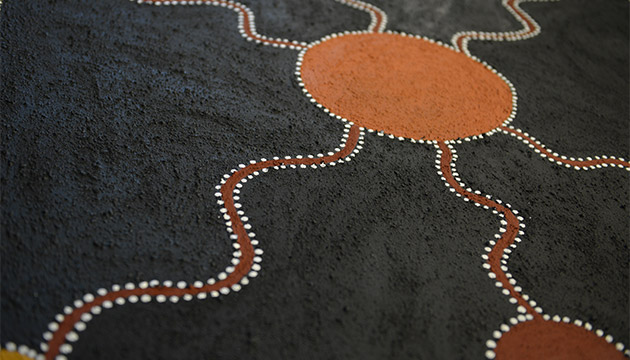Like the Kimberley landscape itself, styles of Indigenous art shift with the kilometres travelled, from the mystical Wandjina motifs of the west to the dazzling desert art of the east.
Story by Therese Hall
According to Broome-based project coordinator Philippa Jahn, many travellers are looking for a cultural experience in the Kimberley, a region in which 40 percent of the population is Indigenous. “But unless you’re an art aficionado, not many people know where to start,” she says.
Hidden in plain sight across the accessible heart of the Kimberley is a cultural journey unlike anything else in the country. The Art Gallery of Western Australia’s Kimberley-focused Desert River Sea Project has strung together a dozen Indigenous art centres to create the Kimberley Aboriginal Art Trail Map.
Travelling mostly on sealed roads, and allowing a leisurely half-day per visit, a week-long itinerary goes from Broome, in the west, to Warmun, near the Northern Territory border, in the east. With a rugged detour down the Tanami Track to take in the famous Warlayirti artists of Balgo, the journey covers half of the Kimberley’s art centres and leaves enough time to balance culture with some of the region’s scenic highlights, such as Geikie Gorge, the Bungle Bungle Ranges and the Wolfe Creek Crater. It’s a cruisy 1500-kilometre trek, with little traffic, the odd roadside boab and the occasional sign to indicate a turn-off to one of the Kimberley’s vast cattle properties or isolated Aboriginal communities. The only towns that punctuate the journey are Derby, Fitzroy Crossing and Halls Creek.
This story excerpt is from Issue #108
Outback Magazine: Aug/Sep 2016









